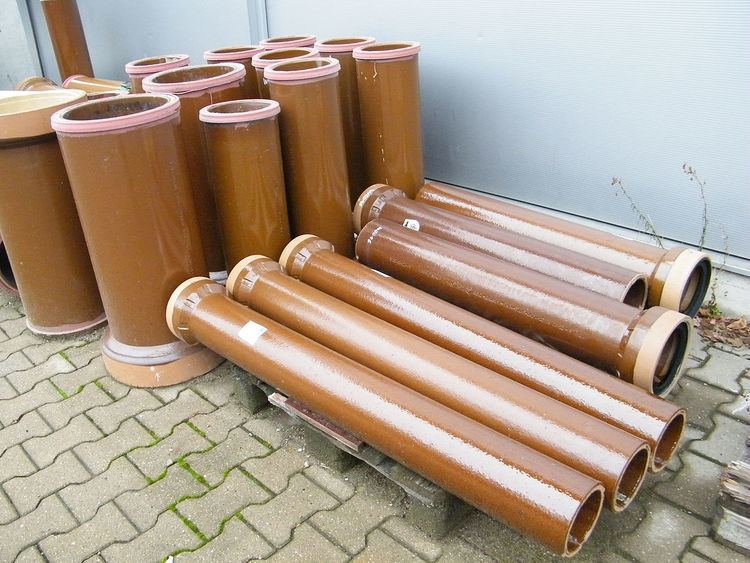 | ||
Vitrified clay pipe (VCP) is pipe made from a blend of clay and shale that has been subjected to high temperature to achieve vitrification, a process which results in a hard, inert ceramic.
VCP is commonly used in gravity sewer collection mains because of its long life and resistance to almost all domestic and industrial sewage, particularly the sulfuric acid that is generated by hydrogen sulfide, a common component of sewage. Only hydrofluoric acid and highly concentrated caustic wastes are known to attack VCP. Such wastes would not be permitted to be discharged into a municipal sewage collection system without adequate pretreatment.
Benefits
VCP products use clay as a major component in its production, making its raw materials environmentally friendly. The manufacturing process has been fine-tuned for centuries and was designed to be fiscally responsible which had the added benefit of being environmentally responsible. But the primary benefit (both environmental and fiscal) of using VCP in sanitary sewers is its long service life.
Flexible joints. introduced in the 1950s are required to be leak-free. Further, VCP's resistance to a wide variety of acids besides hydrofluoric acid make it a long lasting choice for use in underground sewers.
In the U.S., the member companies of the National Clay Pipe Institute have had their products certified as environmentally friendly under a third party audited system that includes an ISO 14020 compliant Life Cycle Assessment.
